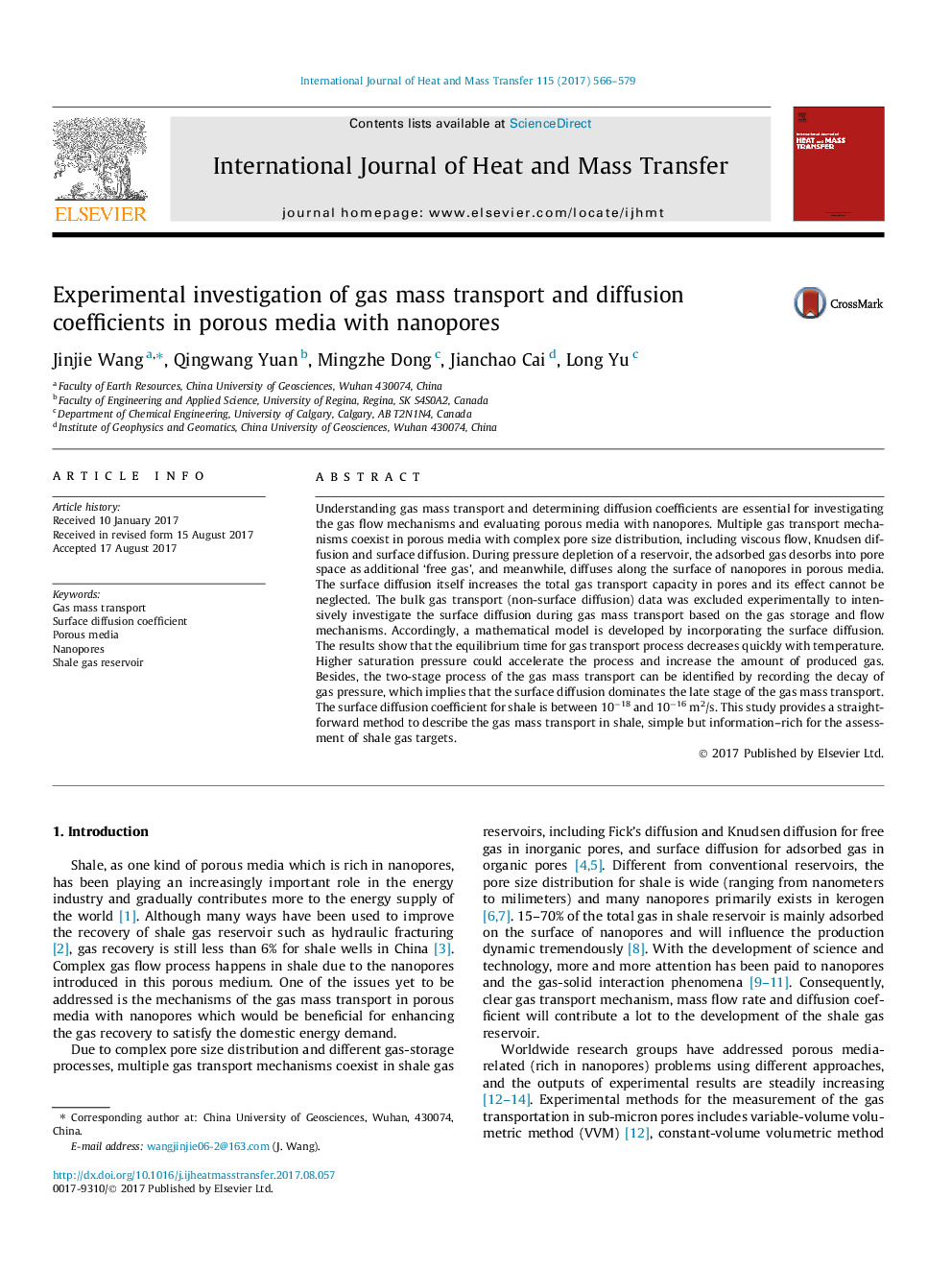| Article ID | Journal | Published Year | Pages | File Type |
|---|---|---|---|---|
| 4993994 | International Journal of Heat and Mass Transfer | 2017 | 14 Pages |
Abstract
Understanding gas mass transport and determining diffusion coefficients are essential for investigating the gas flow mechanisms and evaluating porous media with nanopores. Multiple gas transport mechanisms coexist in porous media with complex pore size distribution, including viscous flow, Knudsen diffusion and surface diffusion. During pressure depletion of a reservoir, the adsorbed gas desorbs into pore space as additional 'free gas', and meanwhile, diffuses along the surface of nanopores in porous media. The surface diffusion itself increases the total gas transport capacity in pores and its effect cannot be neglected. The bulk gas transport (non-surface diffusion) data was excluded experimentally to intensively investigate the surface diffusion during gas mass transport based on the gas storage and flow mechanisms. Accordingly, a mathematical model is developed by incorporating the surface diffusion. The results show that the equilibrium time for gas transport process decreases quickly with temperature. Higher saturation pressure could accelerate the process and increase the amount of produced gas. Besides, the two-stage process of the gas mass transport can be identified by recording the decay of gas pressure, which implies that the surface diffusion dominates the late stage of the gas mass transport. The surface diffusion coefficient for shale is between 10â18 and 10â16 m2/s. This study provides a straightforward method to describe the gas mass transport in shale, simple but information-rich for the assessment of shale gas targets.
Related Topics
Physical Sciences and Engineering
Chemical Engineering
Fluid Flow and Transfer Processes
Authors
Jinjie Wang, Qingwang Yuan, Mingzhe Dong, Jianchao Cai, Long Yu,
